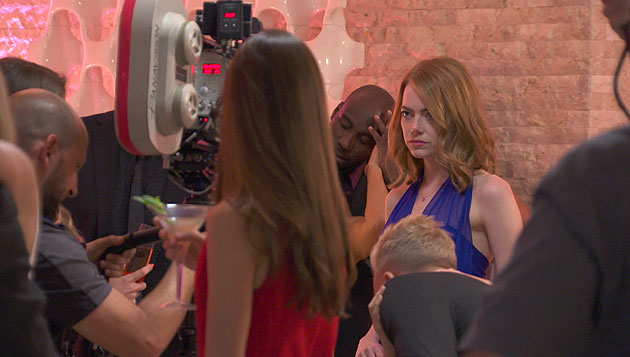Prestige pictures are helping keep film alive, Kodak argued this week in a statement noting that movies captured on 35mm or 16mm film receive more than their fair share of accolades.
Case in point? This week's Oscar nominations were led by La La Land, which tied the record for most nominations in one year (14) and is obviously hoping to win more Oscars than any movie before it. It was shot mostly in Super 35mm anamorphic using Kodak Vision3 250D 5207 and Kodak Vision3 500T 5219, and one sequence was captured on Super 16 anamorphic with Kodak Vision3 250D 7207.

"Celluloid captures colors and contrast completely differently than digital cameras" La La Land DP Linus Sandgren said in an interview published by Kodak. "There are numerous ways to treat film stock to make it look very different, and I think that's obvious to every cinematographer."
La La Land's fellow Best Picture nominees Fences and Hidden Figures were also shot on film, Kodak noted, along with Loving (nominated for Best Actress), Nocturnal Animals (Best Actor), Silence (Best Cinematography), Jackie (Best Actress, Best Costume Design, and Best Score), Hail, Caesar! (Best Production Design) and even dark-horse Oscar candidate Suicide Squad (Best Makeup and Hairstyling). That's nine movies shot on film out of the total of 34 live-action non-documentary feature films nominated this year — not bad.

2016 Sundance feature Beach Rats
Kodak also listed films at Sundance this year — Beach Rats, Frantz, Golden Exits, Person to Person, and Call Me by Your Name — that were shot on film, and nodded to 2016's Cannes Film Festival award-winners I, Daniel Blake, which won the Palme d'Or, It's Only the End of the World, winner of the Grand Prix, Personal Shopper, co-winner of Best Director, and American Honey, which won the Jury Prize. All of those films were shot on 35mm except for American Honey, which was partly captured on film.
"Movies captured on film are winning nominations and awards at a disproportionately high rate," said Steve Bellamy, president of Kodak Motion Picture and Entertainment in a prepared statement. "Film benefits from the world's greatest motion picture artists using it, but the world's greatest motion picture artists also make better movies because they use film."
That's one way to put it. Simply shooting your movie on film doesn't make it more likely that you'll win an award. (Director Jason Mann famously insisted that his Project Greenlight film The Leisure Class be shot on 35mm, and look where that got him.) And you don't have to shoot film to win an Oscar for cinematography. Still, even though film is used in only a small minority of productions, it has maintained its cachet. The decision to shoot on 35mm seems to be a signal of seriousness on the part of the director and DP and of confidence on the part of the producers.
Topics: Blog Oscars awards 2017 film's not dead oscars 2017
Did you enjoy this article? Sign up to receive the StudioDaily Fix eletter containing the latest stories, including news, videos, interviews, reviews and more.
